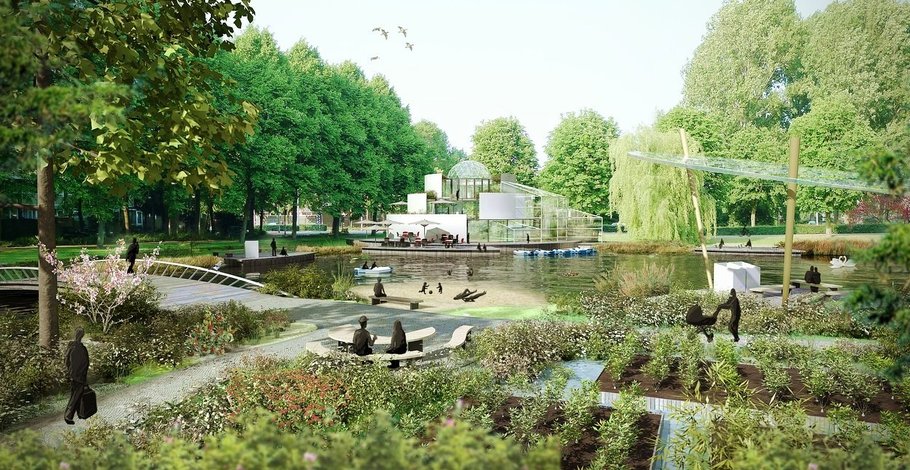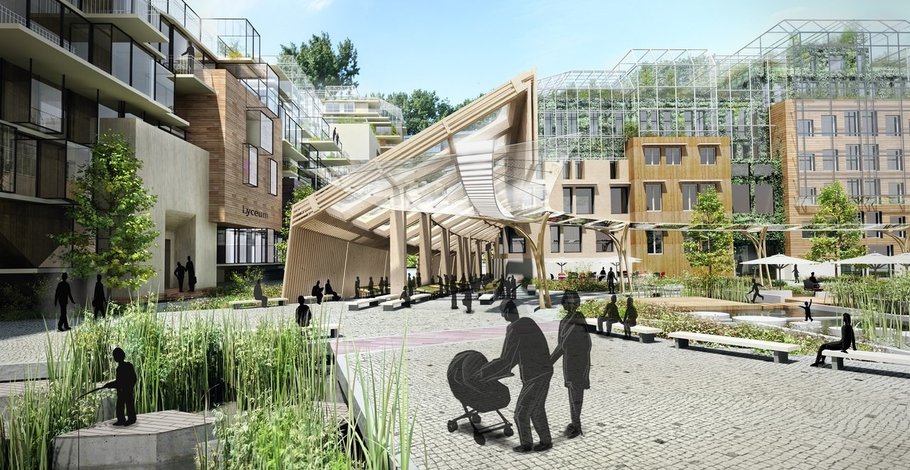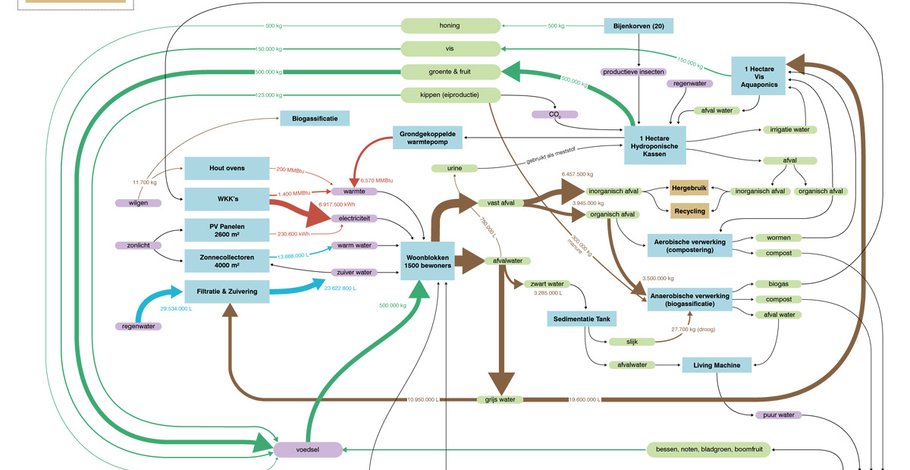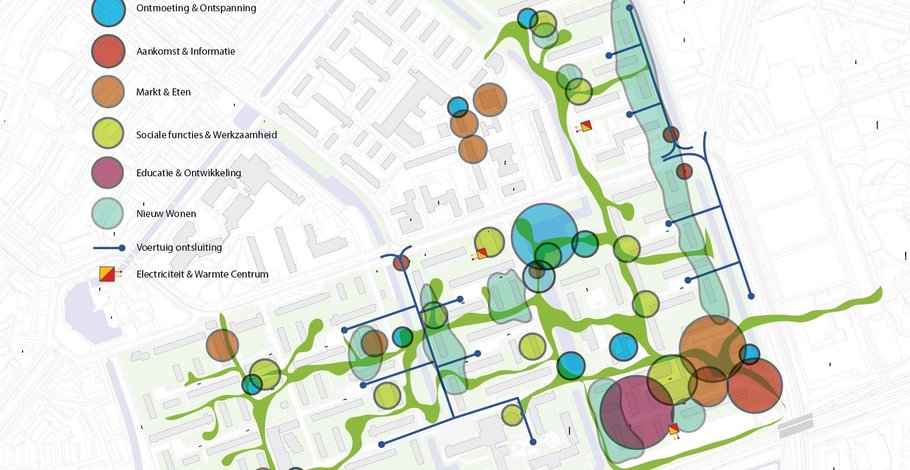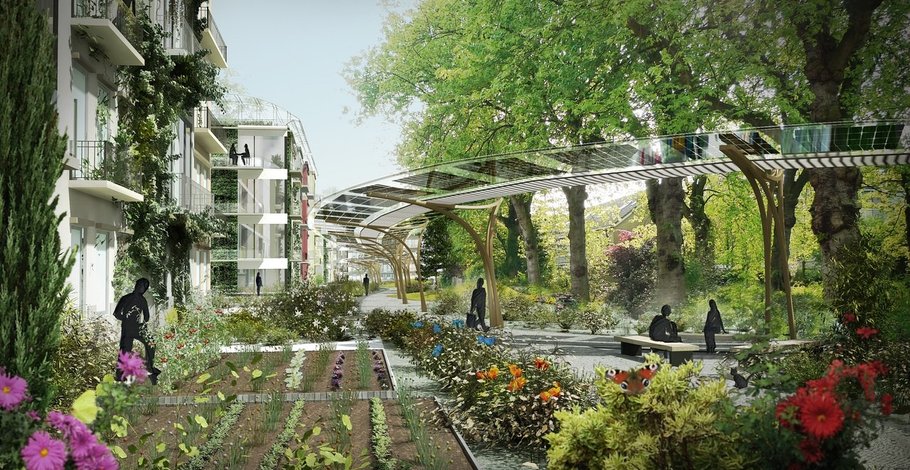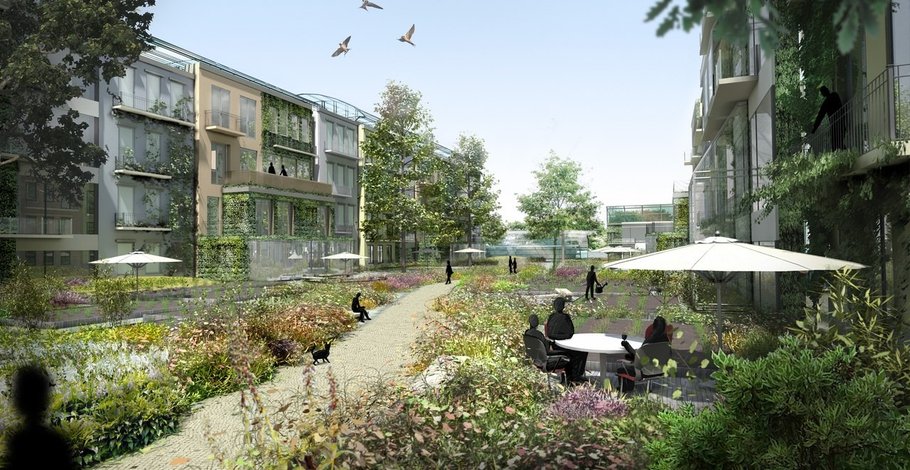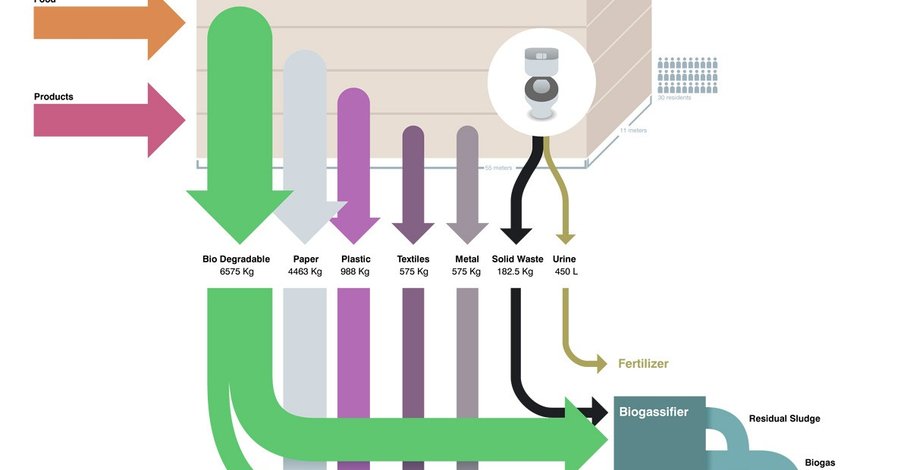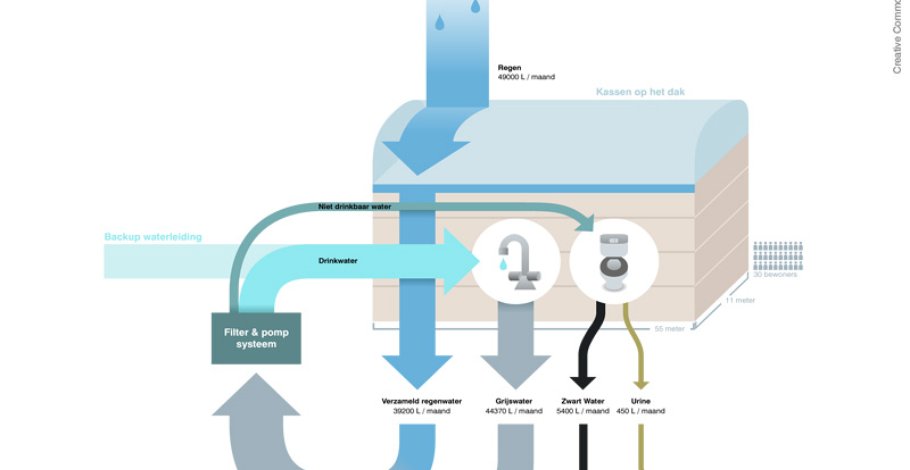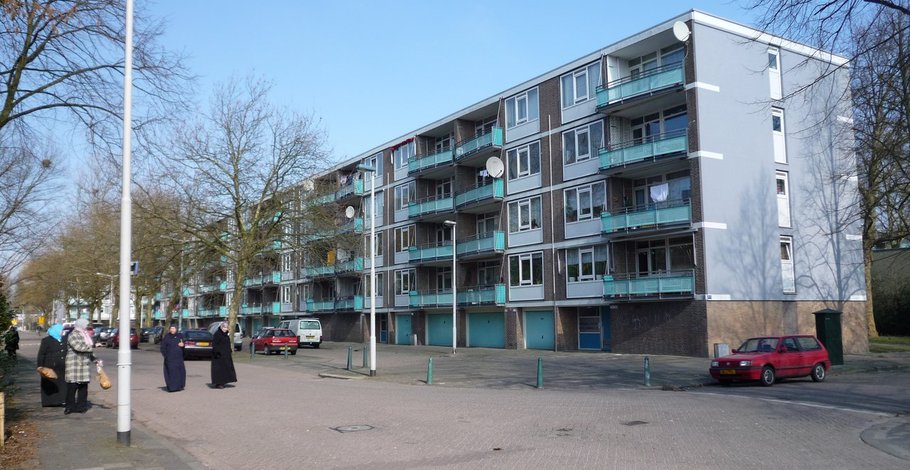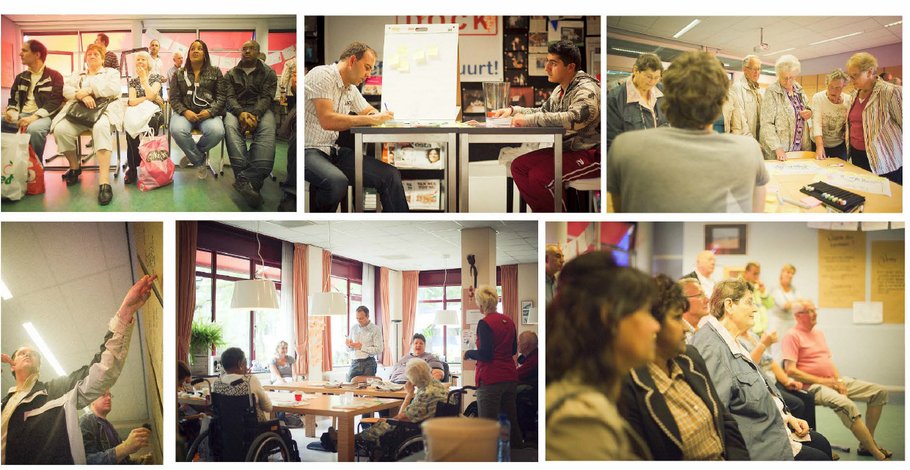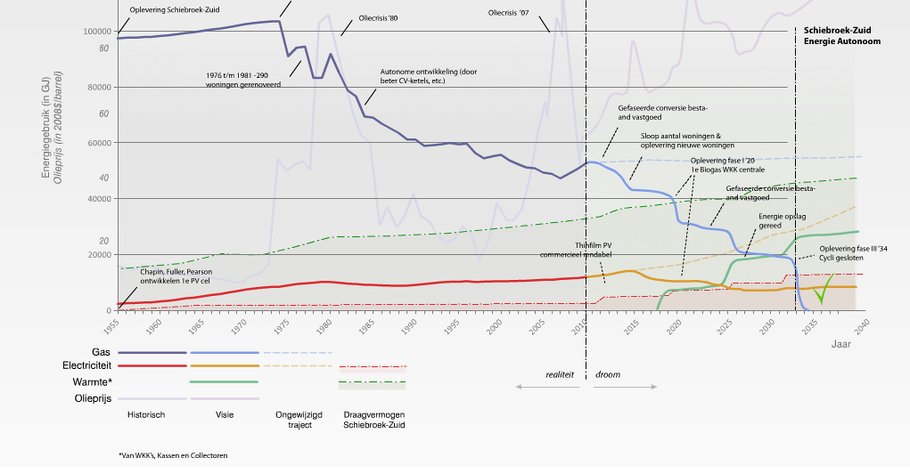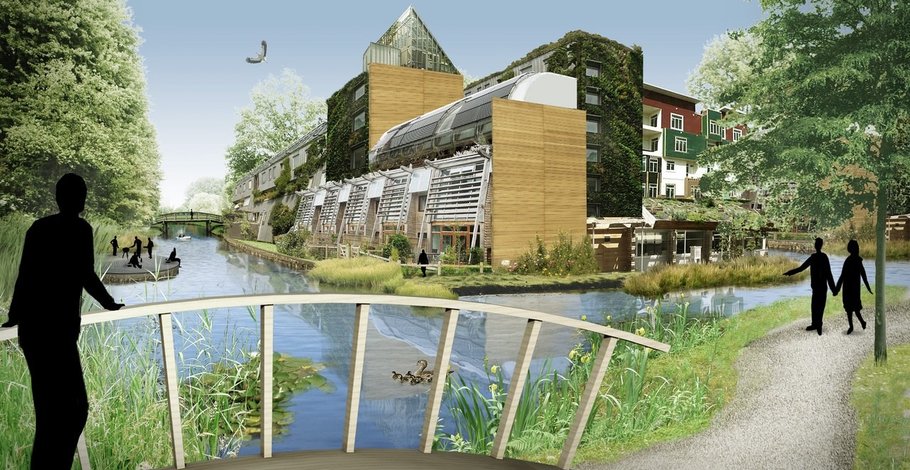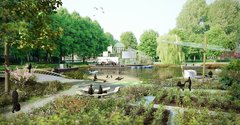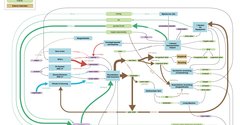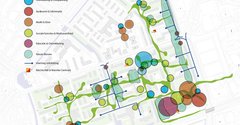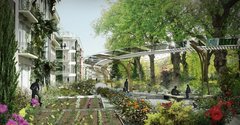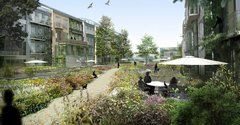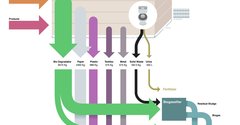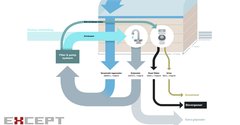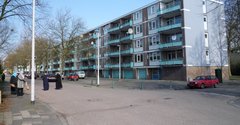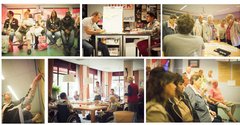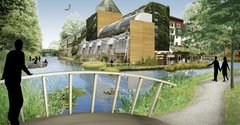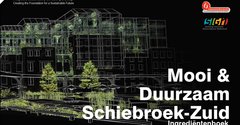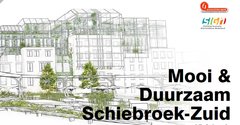
Mooi en Duurzaam Schiebroek-Zuid
Project > Na-oorlogse sociale woningbouw herontwikkeling
Except ontwikkelde deze visie en flexibel plan van aanpak voor het opwaarderen van de naoorlogse sociale woningbouwwijk Schiebroek-Zuid in Rotterdam. De integrale visie transformeert de wijk gedurende 30 jaar naar een zelfvoorzienend en duurzaam woongebied. Het past een breed scala toe van innovatieve energiesystemen, stadslandbouw, sociaal en economisch programma, en renovatietechnieken.
“Mooi en Duurzaam Schiebroek-Zuid” is ontwikkeld in opdracht van woningbouwcorporatie Vestia en het InnovatieNetwerk.
Stedelijk metabolisme
Het visieplan verbindt sociaal-economische programma’s met bewezen technologieën tot een gesloten stedelijk metabolisme. Energie en water worden lokaal opgewekt en de meeste afvalstromen worden ter plaatse verwerkt. Stadslandbouw is de 'biologische motor’ die het gebied op veel onderdelen in beweging zet, zoals energie- en voedselvoorziening, onderwijs, recreatie, welzijn, zorg en lokale economische activiteiten.
Integraal Duurzaam
Met behulp van Except’s integraal duurzame ontwikkelmethode Symbiosis in Development (SiD) is een uitgebreide set van 'ingrediënten’ ontwikkeld die kunnen worden toegepast om de visie te bereiken. Deze ingrediënten zijn opgesteld in samenwerking met betrokken partijen en bewoners. SiD faciliteert en verzekert de integratie van de vele onderdelen van duurzaamheid.
Sociale en Economische Ontwikkeling
De ingrediënten omvatten onder meer programma’s voor doelgroepen als ouderen, kinderen, jongeren, immigranten en ondernemers. Een markt en wijkcentrum vormen de middelpunten voor de nieuwe activiteiten in de wijk. Flexible ateliers zorgen voor ruimte voor startende ondernemers, van werkplaatsen tot kantoren en van keukens tot winkels. Om de plaatselijke economie, energiebesparing en afvalstroomvermindering te stimuleren is een lokale munt voorgesteld.
Lokale zelfvoorzienendheid
Door gebruik te maken van een mix van biogas centrales, photovoltaïsche zonne-energie en warmte uit dakkassen kan het gebied in zijn eigen stroom- en warmtebehoefte voorzien. Eetbare landschappen in de wijk vullen voorheen braak liggende stukken land en leggen een verbinding van betekenis tussen de bewoners en hun natuurlijke omgeving. Een belangrijk aspect van het plan is dat de meeste gebouwen in het gebied niet worden gesloopt maar gerenoveerd, wat leidt tot minder sociale ontwrichting en een lagere milieudruk dan wat gebruikelijk is bij wijkvernieuwing.
Opdrachtgever Vestia start met de uitvoering van een aantal ingrediënten uit het plan. Except hoopt dat dit project tot voorbeeld kan dienen voor de talloze sociale woningbouwwijken die met gelijke typologieën en vraagstukken kampen.
Project Documentatie
Voor dit project zijn twee boeken ontwikkeld: een visieboek en een ingredientenboek. Het ingredientenboek is een meer dan 250 pagina’s tellend overzicht van berekeningen, oplossingen en alternatieven voor alle ELSIA aspecten van het plan. Dit boek is op deze pagina te downloaden in web-resolutie.
Media & Downloads
Downloads:
Referentie Projecten
Growth-Planning Area Planning & Development
Growth Planning introduces an entirely new approach to area planning and urban design. Rather than defining specific programmatic requirements, Growth Planning instead applies socio-economic impulses to the area within certain performance edge conditions. It revolutionzes the task of city design by requiring the urban fabric to organically respond to social and economic stimuli, and allows for increased value, quality, and development over time.
Born out of the necessity to start thinking differently about our built environment due to economic, social and environmental constraints, Except has worked on refining this new form of planning since 2005.

Rome Apartment Building
The Daadkracht project is the design of a four story mixed-use building in the heart of the old city of Rome, offering three spectacular apartments, shops, and a restaurant. Part of the design is a city park bordering the Tevere river, a church and various other historical buildings.
The project presented a unique opportunity to design the first new non-cultural edifice in Rome after Mussolini. To honour this event, an extensive study into the history of Rome, both its ancient past, turn of the century socio-cultural and political developments and modern developments were used as a driving force behind the design of this building.

BKCity Slim Refurbishment
BKCity is a magnificent listed monument of more than 30.000m2 functioning as the faculty of Architecture of the TU Delft. Except created a phased plan to make this historic educational building energy and carbon neutral within ten years.
The plan converts the building into a didactic tool that puts sustainability at the heart of education for generations of architects, introducing a unique in-building ecosystem that provides an inspiring environment, functional qualities and cost savings.
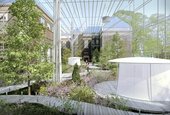
San Francisco Transbay / Salesforce Park
Dit project realiseert 's werelds grootste dakpark in het hart van een van de spannendste steden van het westelijk halfrond, door een bestaand centraal station te transformeren in een ecologische motor: Salesforce Park.
Het ontwerp, ontwikkeld door Except samen met Pelli Clarke Pelli Architects, gebruikt deze kans om de oude betonnen kolos te transformeren in een stadshub waarin een nieuw stadspark, waterzuivering, efficiënt transport en energieopwekking samen gaan. Biodiversiteit, gezondheid en duurzaamheid staan voorop in dit vooruitstrevend voorbeeld van stadsvernieuwing. Het project startte in 2007 en werd opgeleverd in 2019.
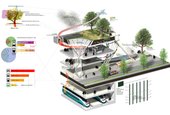
Merredin Health Industries Spirulina Plant
The Merredin Spirulina plant, developed in the year 2000, is one of the first projects in which we applied systems thinking and our holistic, systemic approach to innovation, using ecology as a main component.
The result is a highly unusual but stunningly effective business case for a sustainable, ecological industry to revive a desert town in Australia.
This project is a testament to the strength of holistic, systemic approaches. For this reason, we documented the project extensively on this page, indluing the conception process, business case and design of the plant. For more detail, feel free to contact us.
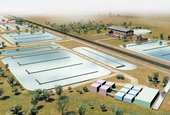
Excellente Gebieden
Under the name of Excellent Areas ("Excellente Gebieden"), a number of Dutch home construction companies and municipalities are engaged in an experiment to use the building standards of 2015 and 2020, today. By the nature of these future building standards, there is much to learn for these actors before they can profitably apply them.
AgentschapNL is the facilitator of the Exemplary Neighborhoods project, and they asked us to evaluate the instruments they have set up for the learning trajectory.
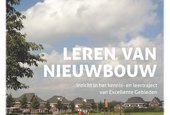
Warmtevisie Tilburg
Dit is de visie voor de doorontwikkeling en verduurzaming van het warmtenet van Tilburg, ontwikkeld met onze consortiumpartners.
De visie dient als startpunt voor de verdere ontwikkeling en samenwerking in Tilburg om tot een duurzame warmtevoorziening te komen, in opdracht van Essent, Gemeente Tilburg, Attero, Brabant Water en MOED.
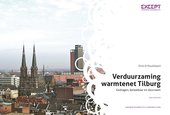
Voedsel voor de Stad
Dit onderzoeksproject bekijkt hoe de stadsbewoner het voedselsysteem beinvloedt. Het bekijke recente initiatieven die de status-quo aanvechten, en stelt een actieplan voor om de verbinding tussen consument en het voedselsysteem te versterken, en zo een sterkere economische verbinding te leggen tussen echte vraag en aanbod.
Het boekje van het onderzoek is gratis te downloaden.
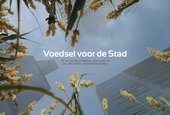
Duurzame Stedelijke Gebieden - 2015 Wereld Review - WWF
This project arose from the joint desire of WWF and Lafarge to contribute original research to move the construction sector towards a sustainable future. We examined 11 exemplary urban districts and neighborhoods around the world from inception to inhabited, using a systemic and holistic perspective. We extracted the success and failure factors, and uncovered new strategies that accelerate sustainable development both on a project and building sector level.
The result is available in a comprehensively illustrated book, downloadable from this page, or read it online at ISSUU.
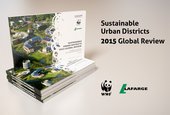
Zevenkamp through our eyes
“Zevenkamp through our eyes: a story of three students and one neighborhood” is an urban transformation project by Except Academy, a learning platform for interns at Except. We developed an inspiration book which tells the story of our journey and experiences while investigating Zevenkamp, the second largest post-war neighborhood in the Netherlands.
The purpose of the book is to inspire and share our vision of Zevenkamp’s future. It has practical examples of opportunities for the neighborhood to become flourishing and resilient with the help of its residents and stakeholders.
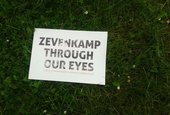
Trade mission Detroit
In cooperation with the Dutch Foreign Office we organized the trade mission to Detroit of May 2015 for over 25 organizations. The program established new permanent business partnerships of Dutch agri- and horticulture, and innovation companies with their American business, governmental and community development counterparts. Detroit, a former powerhouse of the automotive industry, has suffered from deindustrialization, a decline in population, an increase in crime, and general decay. Yet, Detroit is a city full of resources and opportunities.
The event launched Detroit Urban Regen which aims to revitalize the city using smart agricultural solutions and creating a new biobased industry. 22 written pledges of commitment where secured, adding to the existing 15 international partners for Detroit Urban Regen.

Duurzame ontwikkeling Catharijnesingel Utrecht
Samen met KWS-Infra en tenderbureau GAIM gaf Except middels een innovatiesessie invulling aan de duurzaamheidsdoelstellingen van de gemeente Utrecht. De uitvraag van de gemeente Utrecht betrof de sloop van een deel van het in het centrum gelegen projectgebied Catharijnesingel.
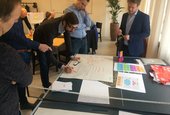
ReGen Villages Oosterwold
Voor ReGen Villages ontwikkelden we een wereldwijd uniek masterplan voor een zelfvoorzienende woonwijk bestaande uit 203 woningen. Het plan is ontworpen op een terrein van 25 hectare in het gebied Oosterwold dat zich op slechts 20 minuten van Amsterdam bevindt. Het is een voorbeeld van zelfvoorzienend, betaalbaar en regeneratief wonen.
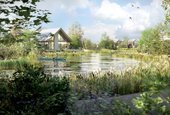
Roadmap to the BGI Manual
Blue Green Infrastructures (BGI) increase the resilience of urban and rural landscapes, integrating their core functions with natural features and processes. Hurdles exist in the process of translating BGI-related knowledge and data from science to practice, and a tool that facilitates this transfer is still missing. We conducted a research in collaboration with a team of partner organizations (JNCC, IFLA Europe, BiodivERsA, and NRW), to pinpoint key preliminary knowledge to design such a tool, and collected our key findings in a report downloadable on this page.
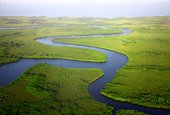
Contact
Tom Bosschaert
Director
 +31 10 7370215
+31 10 7370215
Client & Partners
-
Nominated for Buckminster Fuller prize!
Polydome receives acclaim. -
Cycling under water
Designing a refit for the existing IJtunnel to provide space for cyclists -
Detroit Urban Regen Launched
Dutch Agri-food and Greenhouse Technology Trade Mission to Detroit -
Grid Night - Cities Go Wild - Part II - Urban Biodiversity
A pollination of inspiration about urban biodiversity
-
Growth-Planning Area Planning & Development
Next Generation Open Source City Planning - June 2009 -
Rome Apartment Building
New Architecture in the heart of old Rome -
BKCity Slim Refurbishment
Sustainable Renovation of TUDelft's Architecture Faculty -
San Francisco Transbay / Salesforce Park
's wereld's grootste ecologische dakpark -
Merredin Health Industries Spirulina Plant
Algen fabriek voor landelijke herontwikkeling -
Excellente Gebieden
Leren van Nieuwbouw -
Warmtevisie Tilburg
Duurzaam, eerlijk en betaalbaar -
Voedsel voor de Stad
Rol van stadsbewoner in het voedselsysteem -
Duurzame Stedelijke Gebieden - 2015 Wereld Review - WWF
Leren van 11 voorbeeldige eco-wijken -
Zevenkamp through our eyes
The transformation of Zevenkamp into the happiest neighborhood in Rotterdam -
Trade mission Detroit
Launch of Detroit Urban Regen -
Duurzame ontwikkeling Catharijnesingel Utrecht
Full spectrum duurzaamheidsstrategie voor stedelijke infrastructuur -
ReGen Villages Oosterwold
Masterplan voor een zelfvoorzienende woonwijk -
Roadmap to the BGI Manual
Bridging the knowledge gap in the field of Blue Green Infrastructures
Team
-
Ariana Bain
Industrial and Urban Ecologist
-
Eva Gladek
Industrial Ecologist
-
Gerard Vink
Communicatie Strateeg
-
Jacob Verhaart
Head of Science; Industrial Ecologist
-
Michiel van der Vight
Senior Associate
-
Stephanie Bartscht
CommunicatieExcept Integrated Sustainability -
Hidde van der Lijn
Fotografie & VisualisatieExcept Integrated Sustainability -
Patrick Bellew
IngenieurAtelier Ten -
Han Dijk
Ruimtelijke strategiePosad -
Stephanie Carlisle
Environmental DesignExcept Integrated Sustainability -
Bart Verhagen
Client RepresentativeEstrade / Vestia -
Peter Oei
Partner RepresentativeInnovatieNetwerk / SiGN
